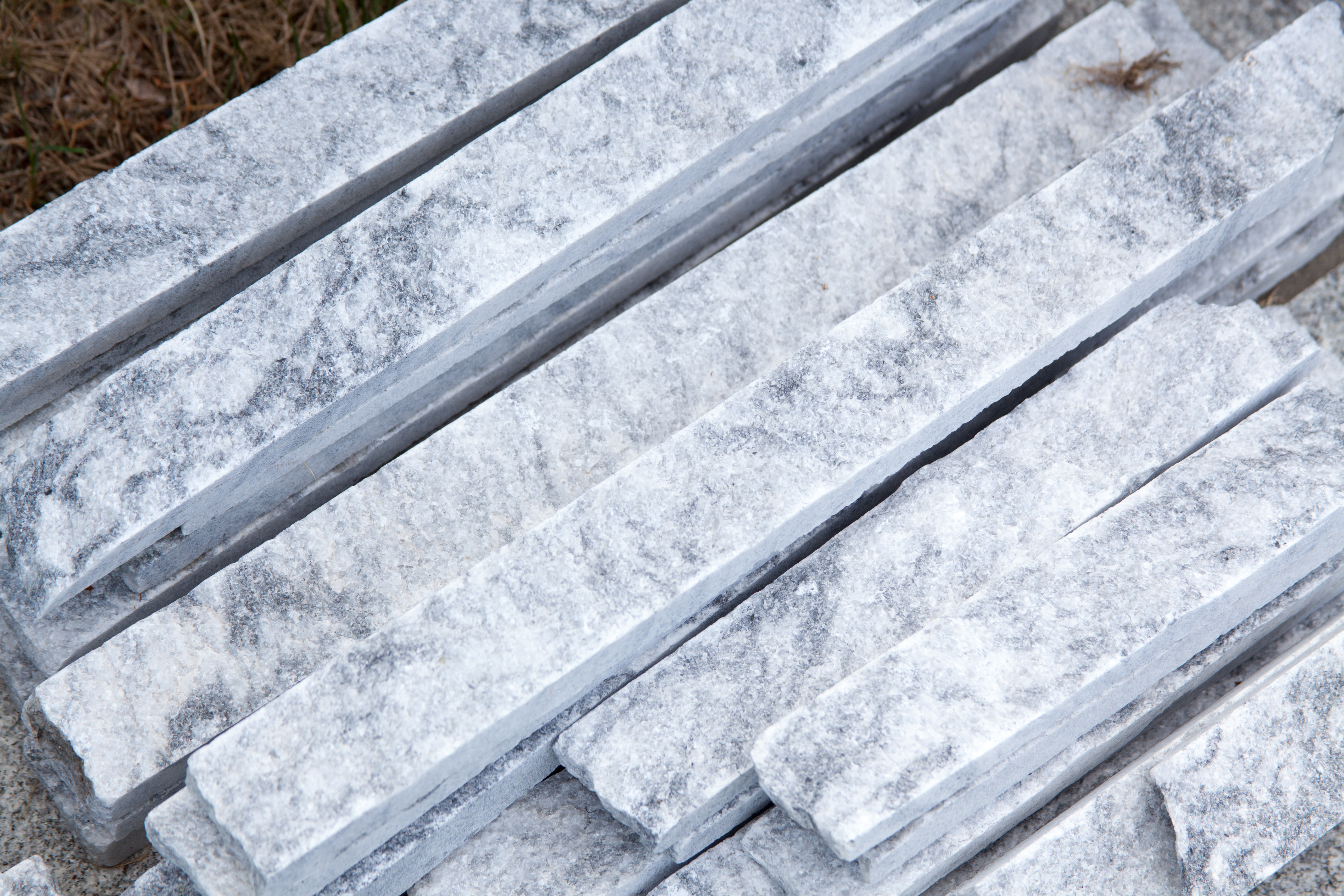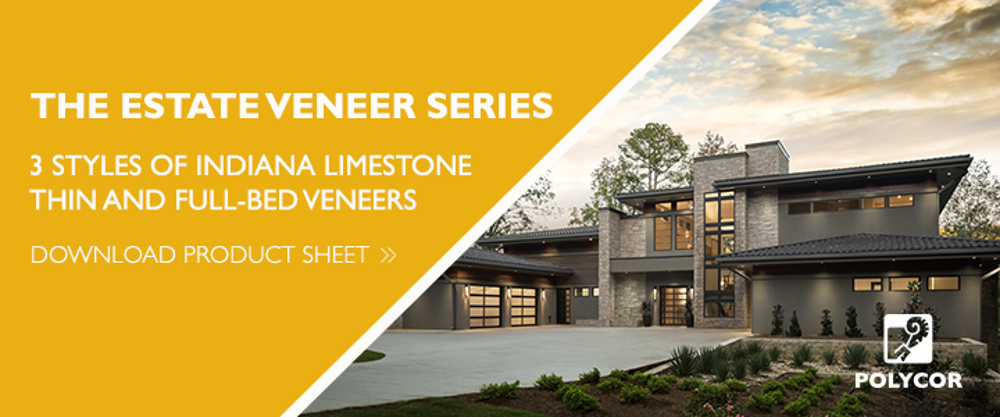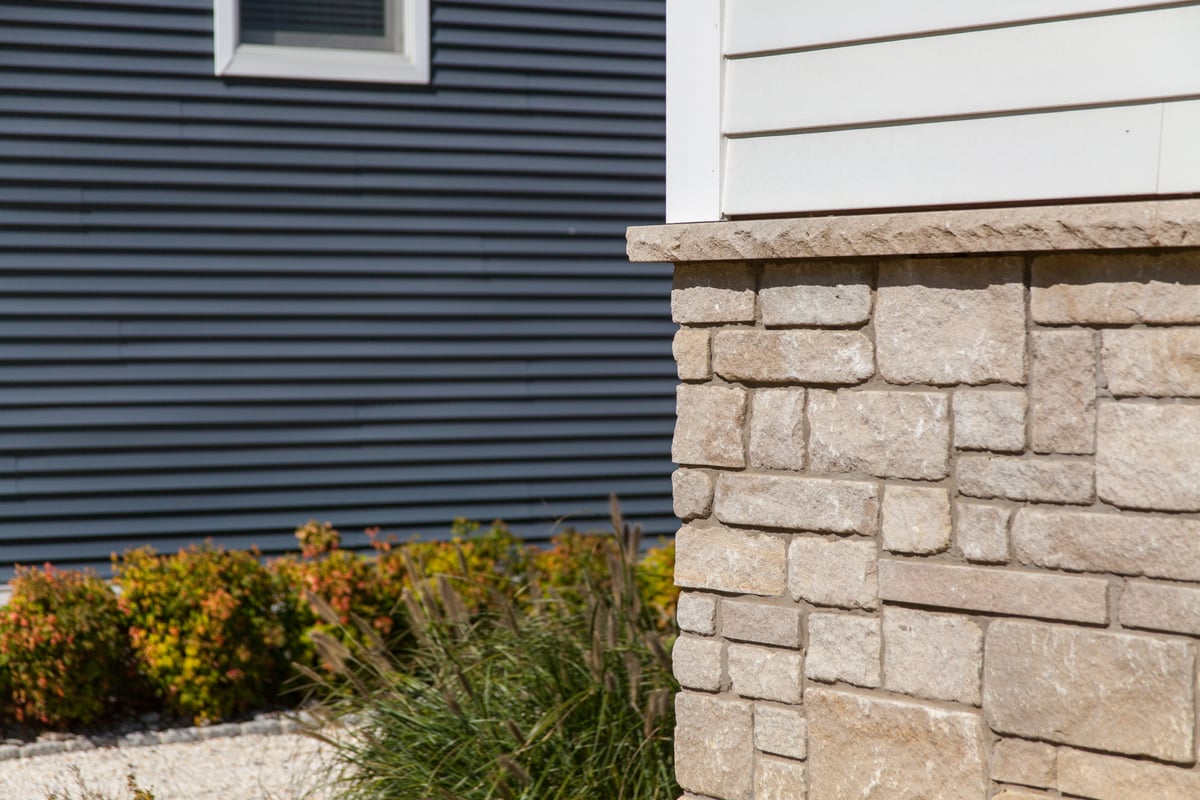
Natural materials have been gaining popularity in the building materials market. People are growing more interested in how their homes are constructed, and making impactful decisions about how their design choices affect the environment.
It comes down to this - people are wanting more authenticity, not contrived solutions or an appropriation of something real, but the real thing. It’s the same mindset as not wanting to feed their family processed foods and searching for organic options instead. It’s just now, people don't want their homes to be processed, too.
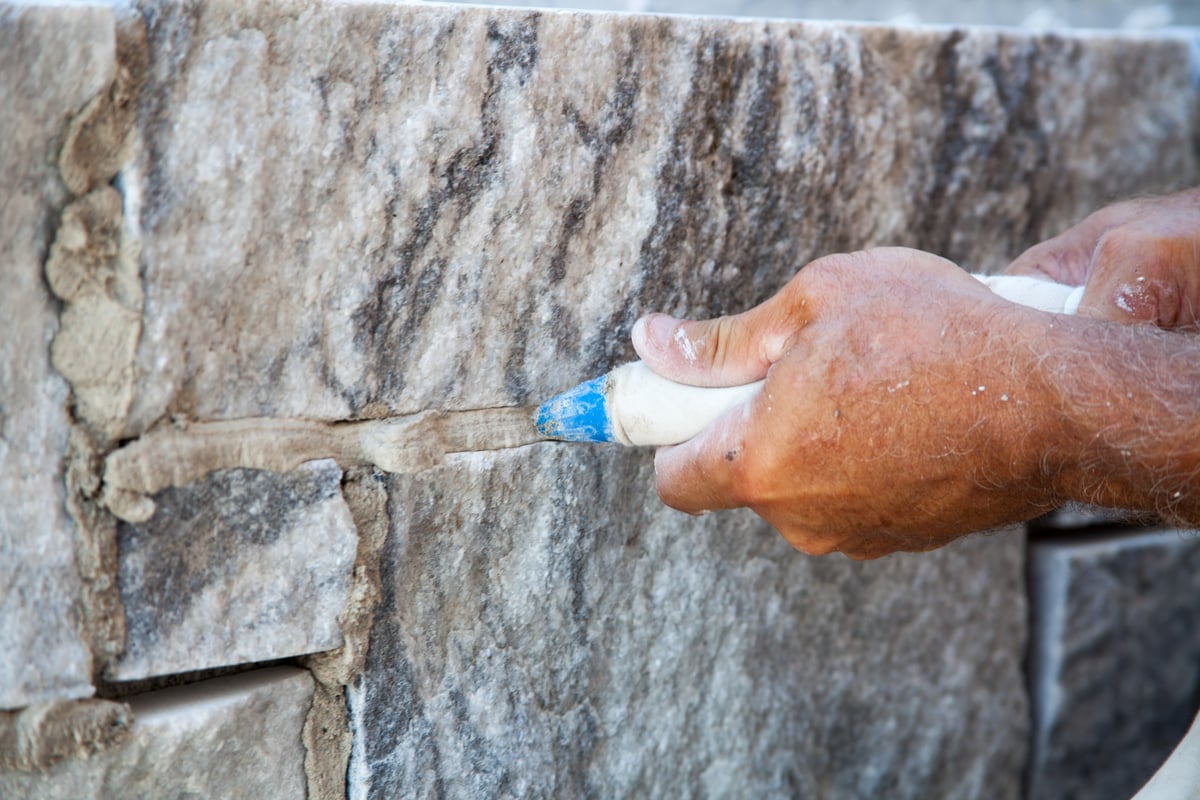
Tastemakers have noted this change and a distinct pivot to a warmer, more welcoming aesthetic, accented with materials from the earth that help residents relax and reconnect with the natural world. The natural choice to achieve that aesthetic is genuine natural stone. There are many benefits to thin stone veneer. Regardless of the overall home style—rustic, industrial, contemporary— authentic stone adds color, texture, and a natural feel that cannot otherwise be achieved by engineered, manmade 'stones'.
There are many intentional misconceptions about what is truly a natural stone. Manufacturing companies purposefully muddy the language they use when describing their faux stone products—like using terms “manufactured stone veneer” or “cultured stone veneer” — to confuse customers. It’s challenging to navigate the products on the market: not all products labeled ‘limestone’ are the same as genuine limestone that is quarried from the earth.
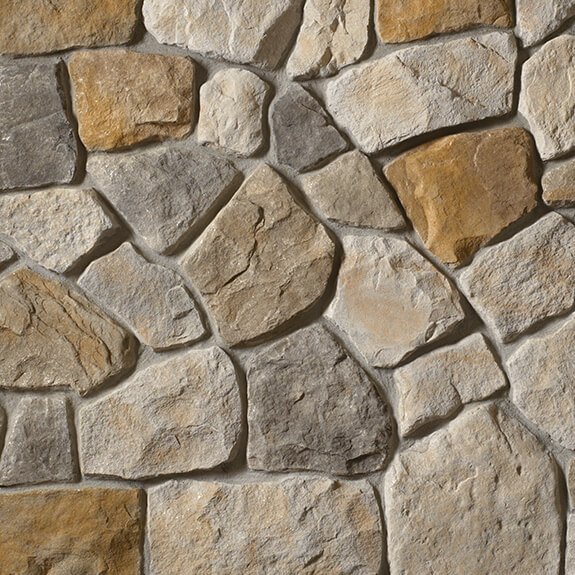
Cultured Stone Photo from Manufactured Stone Supply
Manufactured stone is typically made of a mix of Portland cement, sand, crushed aggregates, colorants or pigments, water, driers and/or plasticizers to alter their consistency and drying times. This messy brew is then poured into molds that are made to impersonate a stone's texture and shape. There are only a set number of molds to create a variety of textures, at which time they will begin to repeat themselves.
The slurry is then baked, cured and then ejected from their molds. On the surface, the manmade veneer attempts to mimic the color of genuine limestone veneers, but it’s only a surface similarity. This faux stone doesn’t measure up to the real thing. Mother Nature has been producing stone for literally millions of years, after all, so she’s pretty hard to beat. The point is, the veins, natural fissures and pattern of natural stone just can’t be replicated.
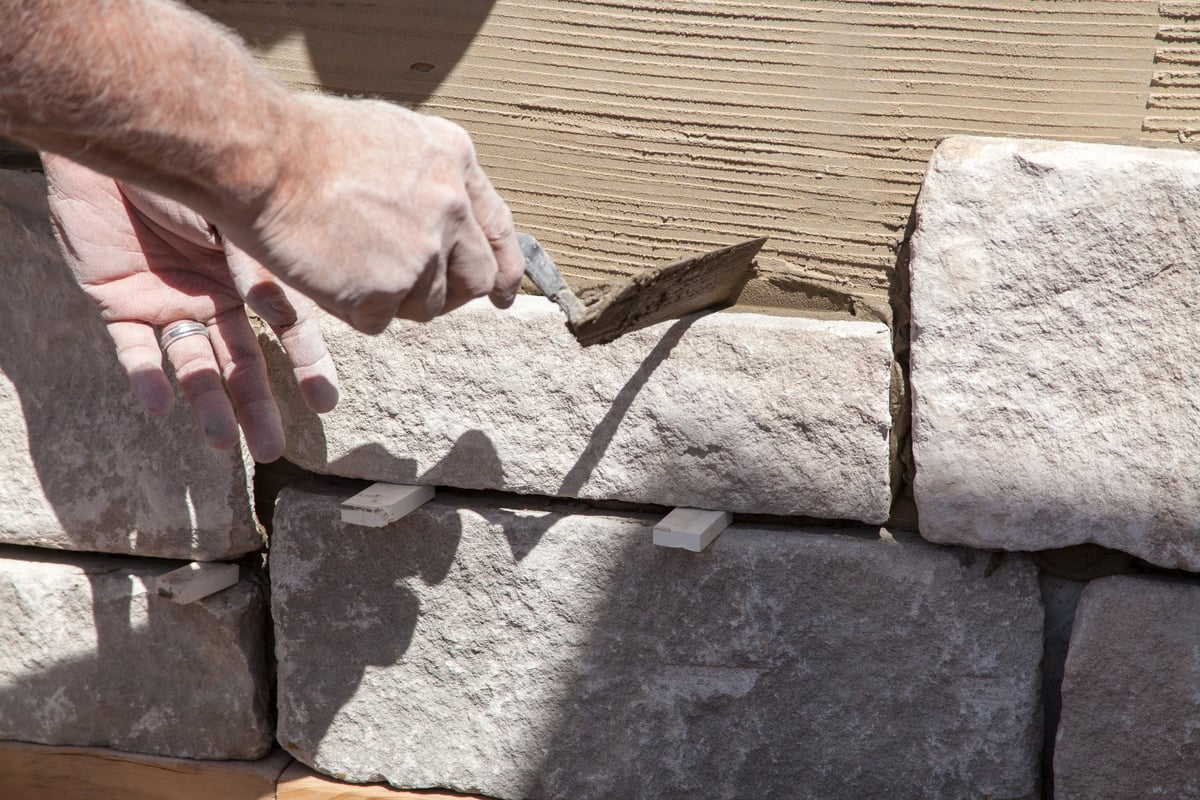
Genuine, natural stone thin veneer is 100% natural and cut from larger blocks of quarried stone. They have no colorants, dyes or chemicals added. Pictured: Indiana Limestone - Full Color Blend™, America's Original Building Stone.
Natural stone veneer is simply that—real stone that has been cut into a veneer thickness out of larger blocks of stone quarried from naturally occuring geological deposits. It has all the shading, strength, colors, and versatility that come with eons of heat and pressure. Genuine thin stone veneer can be custom chiseled, cut, or split to create special designs or to fit into certain spaces where edges could be exposed.
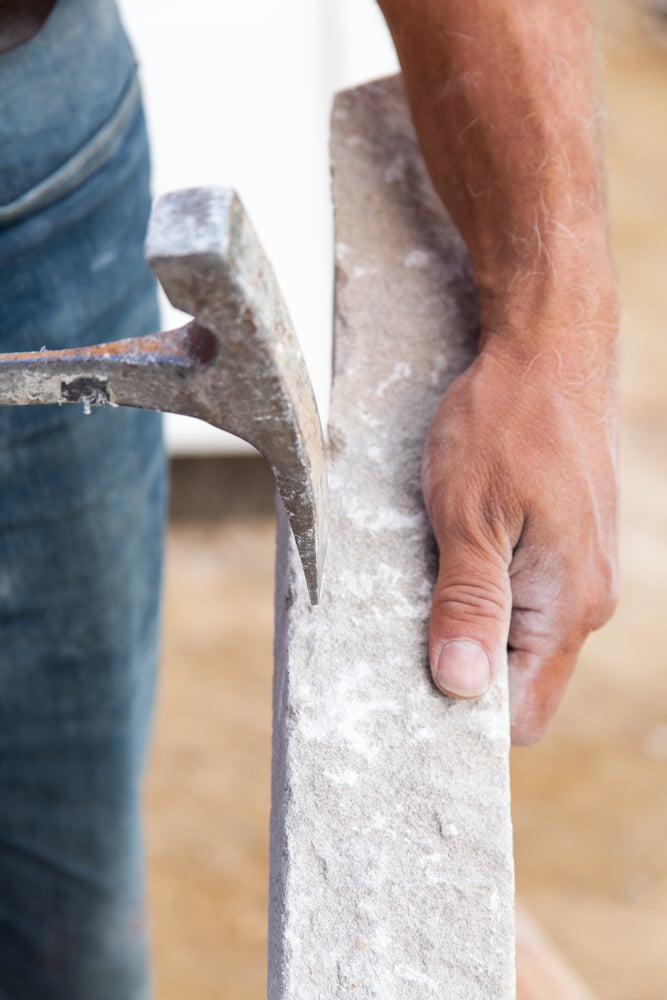
If you try any of those techniques with manufactured stone, the difference would be clear – and disappointing. The interior composition of a manufactured faux veneer looks completely different from the exterior face. Meaning one wrong move can spoil the façade and reveal its true internal make up - an agglomeration of different materials cemented together by artificial means.
SEE THE FULL LENGTH STONE VENEER INSTALLATION VIDEO HERE ON POLYCOR U
Many masons prefer working with true stone veneer for this reason: they can infinitely trim and adjust it to any size or shape, and can even make adjustments after it has been installed using chisels, mallets, saws or grinders. In the hands of a skilled mason, the installation of limestone veneer is an art, especially compared to what can be achieved with manufactured stone. Being made from pre-set sized molds, manmade venees require conforming to standard sizes that result in standard looking installations without many customization options or opportunities for design innovation.
LEARN MORE ABOUT INSTALLING NATURAL STONE THIN VENEERS AT POLYCOR U
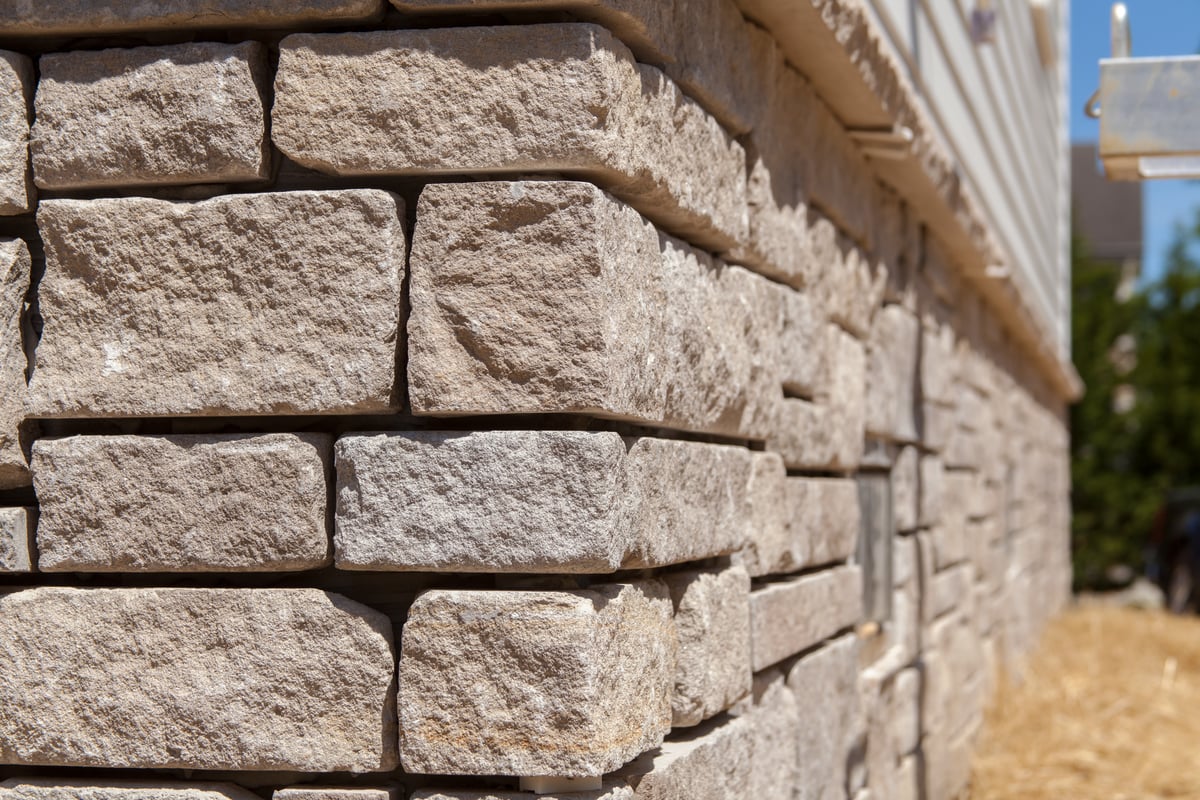
Pictured: Rockford thin veneer cut from Indiana Limestone - Full Color Blend™
Another advantage of having a genuine stone veneer exterior is that it will not retain the same amount of moisture that a manufactured stone will. So the limestone exterior, for example, would prevent more water from penetrating the building envelope whereas the manufactured stone exterior will absorb more water into it, leading to the potential for deterioration of the wood sheathing below over time.
Stone veneers are often perceived as being intended for one kind of application only, such as an alternative to home siding. And yes, stone veneer siding gives new builds stately elegance and refreshes an existing home by adding a classic touch.
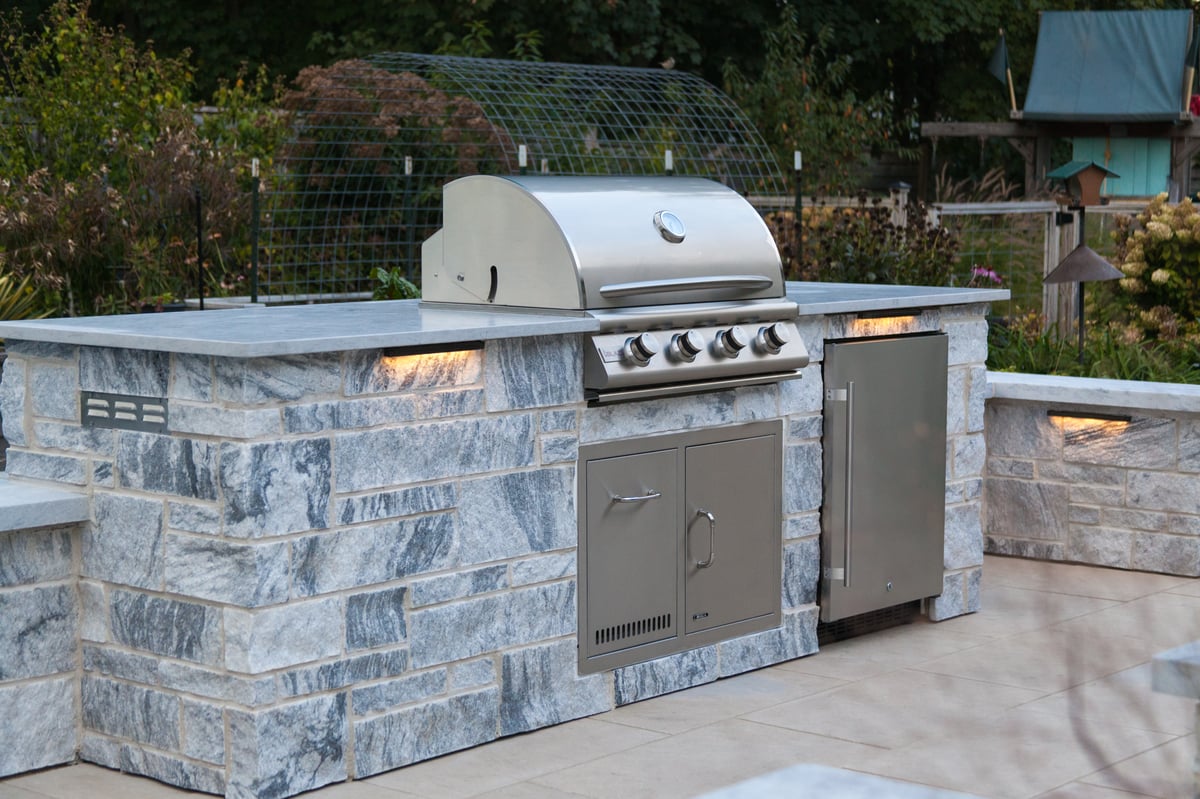
Hard-wearing and durable, natural stone thin veneer stands up to the elements better than any engineered, cultured stone. And aesthetically they are unmatched in their variety of color, tone and texture. Pictured: Georgia Marble™ - Pearl Grey Berkshire thin veneer.
But natural stone veneers are highly suitable for a host of other outdoor applications, and contractors are discovering the ease with which they can be installed. A stone veneer seat wall is one example, a split-faced marble veneer outdoor kitchen or barbeque is another like in the photo above.
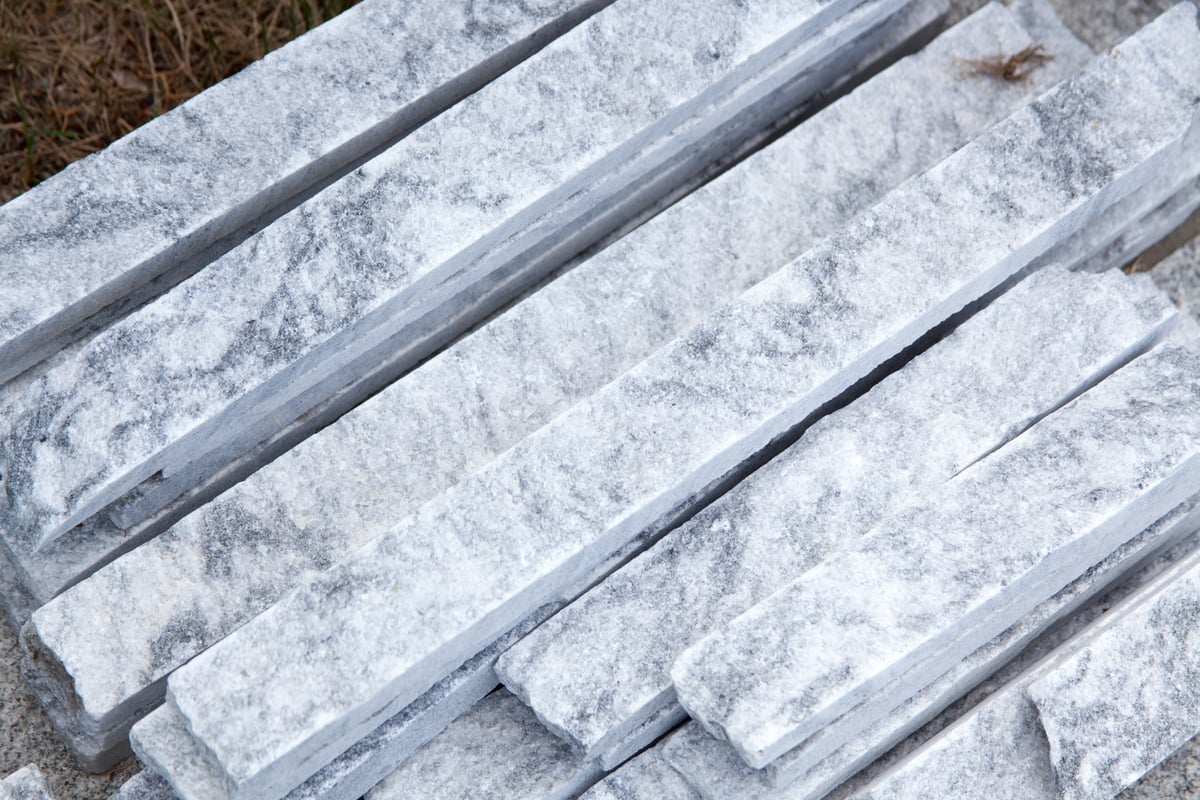
Naturally beautiful, natural stone veneer is a timeless choice for many home building projects. It’s an authentic choice for everything from fireplaces to feature walls in beautiful outdoor kitchens. Whether a fireplace, pizza oven, or a full outdoor kitchen stone veneers can help create a first-rate outdoor space.
.jpg?width=1200&height=800&name=20210126_polycor1-98%20(1).jpg)
Thin stone veneers aren't just for your home's exterior. Natural stone veneers can equally enhance interior spaces as well, such as in this Rhode Island home with Georgia Marble™ - Pearl Grey Berkshire thin veneer.
Natural stone is the original green building material, it is made by the earth and for the earth. It does not require other materials to make it like dyes, cement and chemicals used to manufacture cultured, faux stone or man-made concrete veneer. Natural stone takes less water to process, doesn’t release VOCs, and lasts longer than concrete, glass, or quartz. Plus projects that use natural stone require less maintenance. It comes to us ready-made by Mother Nature.
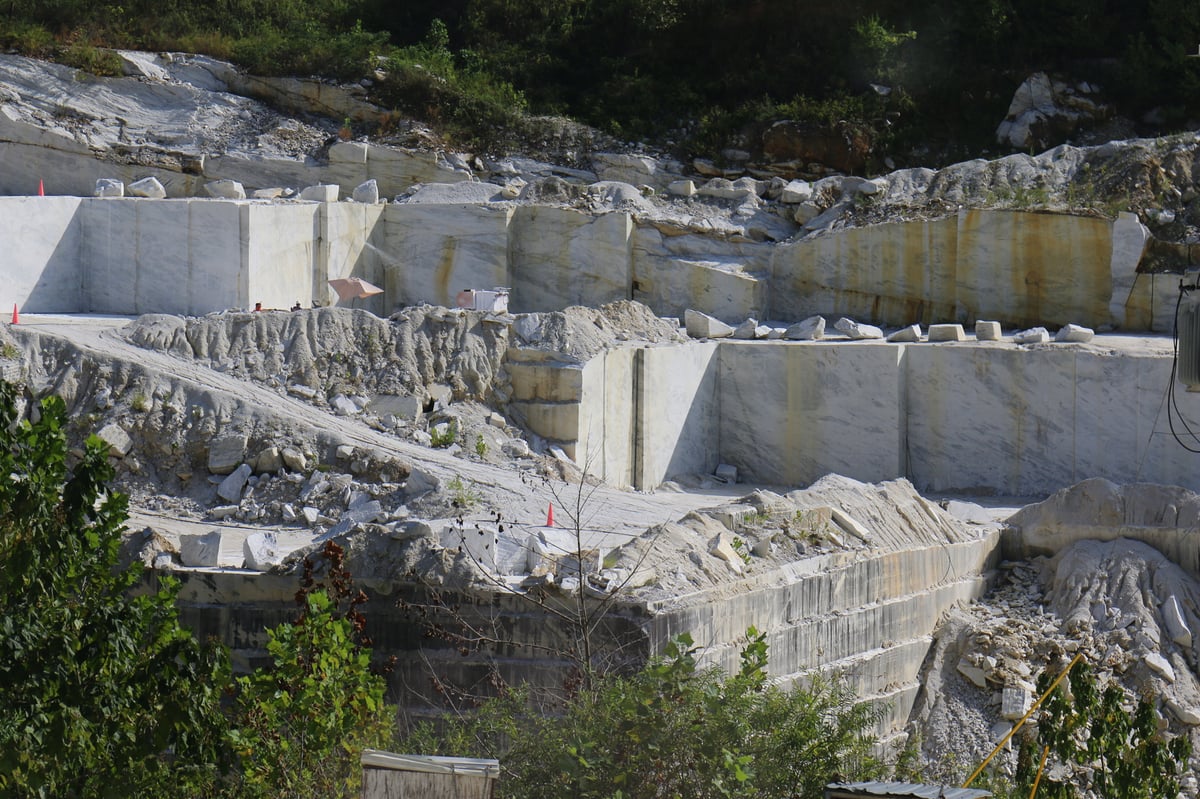
Where natural stone veneer originates. Quarries, such as the iconic Polycor Georgia Marble quarry in Georgia, are the sole source of genuine stone veneer. No other ingredients are required to manufacture it. A block is cut from the quarry and is then cut into smaller increments, resulting in the final product.
Granite, marble, and limestone from Polycor’s North American quarries are sustainable, all-natural stone solutions for any project, large or small. Sourcing stone locally means you won’t have to deal with any supply chain issues or backups waiting for ingredients to become available or imported into the country from overseas, and the final product will have lower embodied carbon which is better for the planet.
LEARN MORE ABOUT POLYCOR'S COMMITTMENT TO SUSTAINABILITY
Natural stone veneer options are versatile enough to achieve the aesthetic, performance, and budgetary goals of your home project. As you search for inspiration for how to best enhance your home, consider all the benefits thin stone veneer has to offer.
